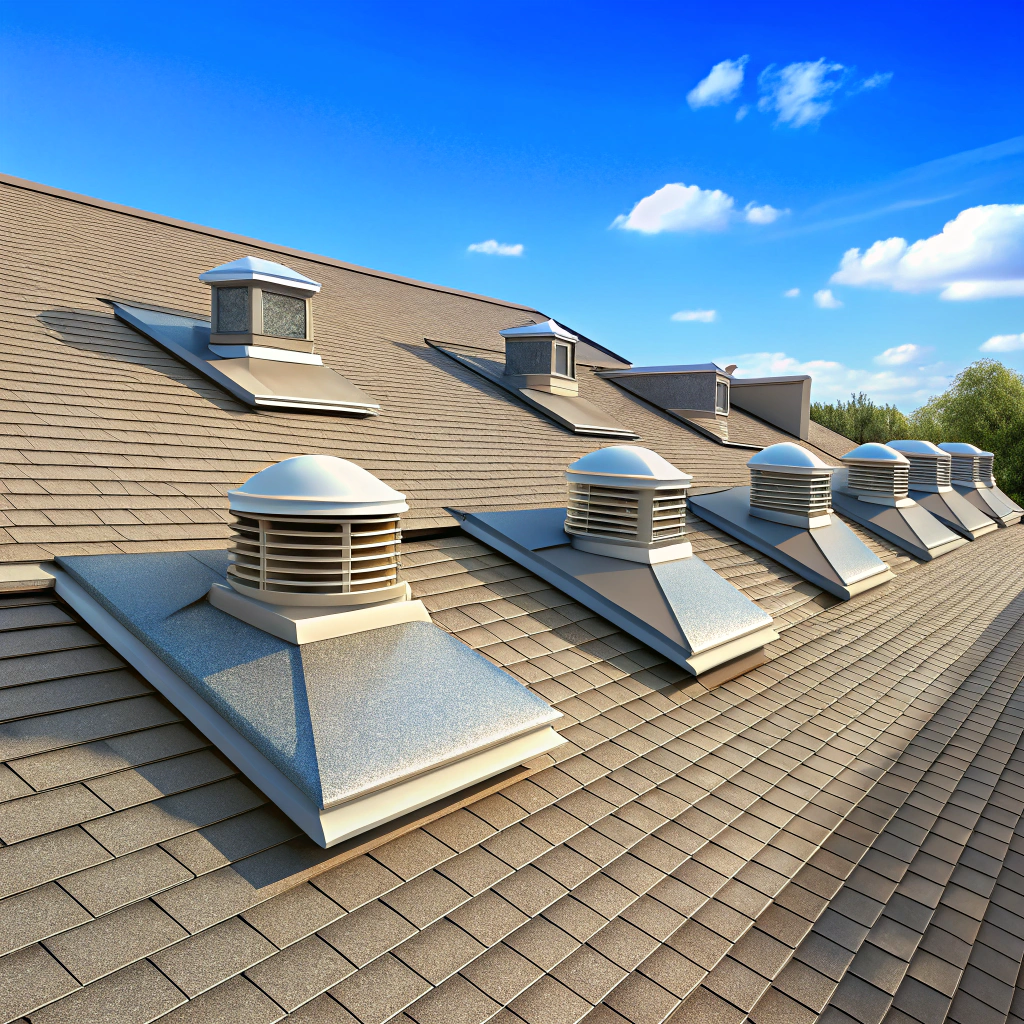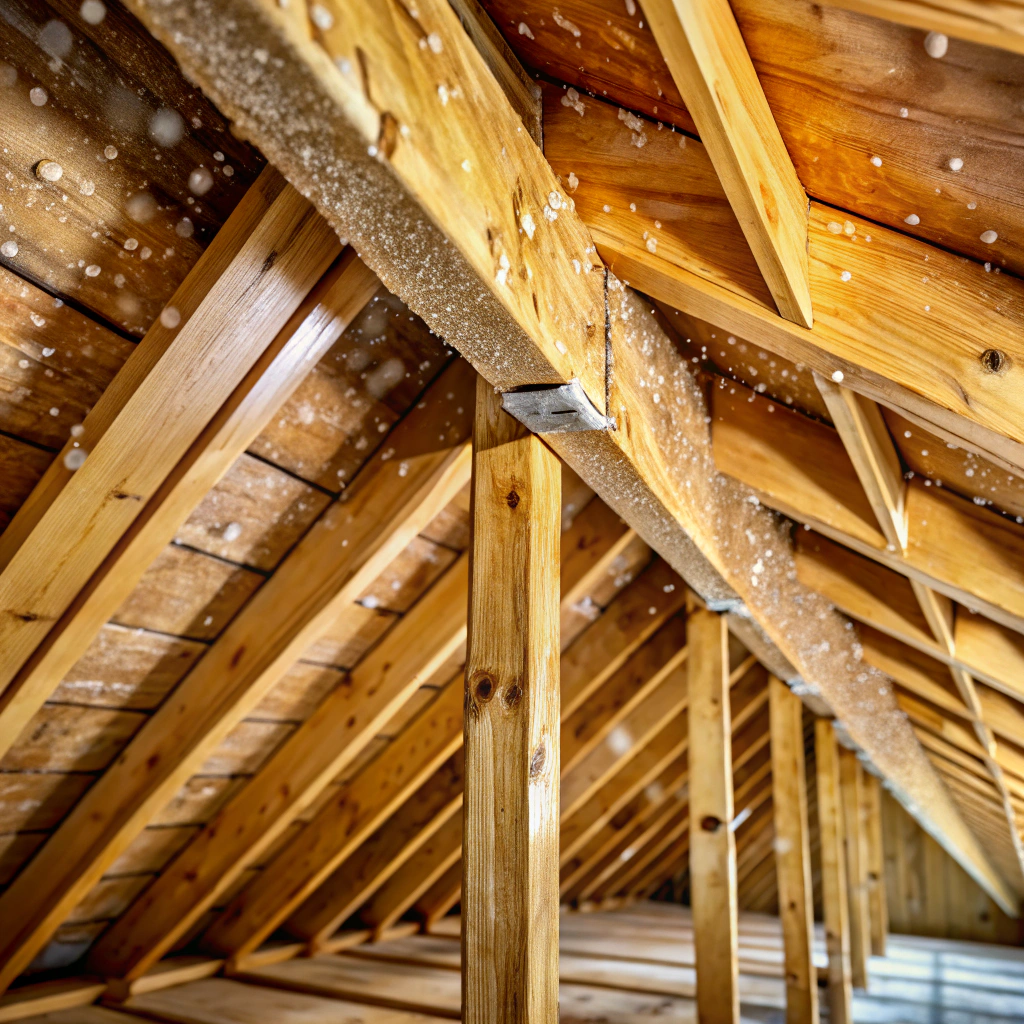Last updated on
Discover the basics of standard roof pitch and why it’s a critical factor in construction planning.
Searching for the perfect roof pitch? Well, butter my shingles and call me a contractor—you’re in the right place! Whether you’re dreaming of steep, snow-shedding wonderlands or low, lazy commercial rooftops, this guide has you covered. Get ready to delve into the nitty-gritty of roof pitches, materials, and even some Colorado weather wizardry. Let’s dodge the common blunders and nail down the math. Don’t just climb on your roof—we’re talking safety tips too! Stick around; there’s so much to unpack, it’s practically a roofing road trip!
Key takeaways:
- Roof pitch measures vertical rise over horizontal run.
- Standard residential pitch ranges from 4:12 to 9:12.
- Flat roofs dominate commercial buildings’ structure.
- Steeper slopes improve drainage and attic space.
- Materials often depend on the roof pitch type.
What Is Roof Pitch?

Think of roof pitch as the hat angle for your house. It’s the secret sauce behind how steep your roof is or, in technical terms, the vertical rise over a horizontal run. Architects and builders often express this as a ratio, like 4:12, meaning for every 12 horizontal inches, the roof rises 4 inches.
It affects drainage. A ballerina-slender slope ensures rain dances off elegantly, while a flatter slope may keep water waiting for its cue.
Pitch can spice up aesthetics. Steep pitches make homes look like storybook castles, while a gentler slope offers that squatter, modern charm.
The pitch impacts space. Attics lovingly cradle higher pitches, promising more storage or even a secret hideout.
Lastly, it influences material choice. Some roofing materials prefer the thrill of the steep. Others enjoy lounging on the low and slow. Picking the right pitch is about blending form, function, and a touch of whimsy.
Most Common Roof Pitch for Residential Buildings
When it comes to residential rooftops, the 4/12 to 9/12 pitch range is like the sweatpants of roof angles–comfortably standard, universally accepted, and surprisingly versatile. Imagine inviting the roof over for brunch; it wouldn’t balk at eggs or waffles—it compliments almost any architectural style. A moderate roof pitch not only provides enough slope for rain and snow to slide off in a dignified fashion but also offers easy maintenance access. Who could ask for more?
Let’s skim through the reasons these pitches are popular contenders:
- They strike the perfect balance between form and function, like a sweet multitasking unicorn.
- These pitches usually support a wide range of roofing materials. Asphalt shingles? Check. Metal sheets? Yes, please. Nobody’s got time for a picky roof.
- They are cost-effective. If roofs had a talent show, these pitches would win the budget-friendly category with jazz hands.
- They provide good attic ventilation. Your attic isn’t a stuffy sauna, thanks to these pitches.
In sum, the charm of these pitches lies in their ability to blend well with a variety of home designs, while also ensuring practical longevity.
Most Common Roof Pitch for Commercial Buildings
In the world of commercial buildings, flat roofs reign supreme like a pancake-loving tyrant. They typically feature pitches ranging from 0.5:12 to 2:12. These gentle angles are ideal for hosting bulky HVAC systems, providing easier maintenance access.
While they might not attract mountain climbers, these roofs are best buddies with the infamous rubber membrane—a common roofing material choice known for its durability.
Flat pitches also favor the installation of solar panels, because eco-friendly is the new cool. Not to be left out, steep pitches occasionally make a guest appearance, usually in regions where rainy days outnumber sunny ones. Steeper slopes provide better drainage, ensuring the rain doesn’t overstay its welcome.
So, whether hosting rooftop parties or lounging with HVAC units, commercial pitches sure know how to keep things interesting and functional.
Why Opt For a Steeper Slope?
Reaching for the sky with a steeper roof can be surprisingly advantageous. First off, water and snow become gravity’s problem, sliding off with grace and keeping your roof dry and happy. No more sitting water puddles plotting against you!
A sharper angle invites more attic space. Who doesn’t want extra room to store those holiday decorations and questionable fashion choices from 1995? Also, steeper roofs tend to be more durable. They stand up to wind like a brave knight in a gusty joust, reducing the chances of shingle-shifting during a blustery day.
Adding a touch of drama to your cabin can even increase curb appeal. Who knew you could make your house look taller without stretching it like a cartoon? If climate gives you regular snowfall, think of a steeper slope as the roof’s way of politely saying “No, thank you” to snow piles.
Oh, and if your neighbors brag about their boring flat roofs, you can always boast about your epic slides in a winter wonderland. Just maybe don’t try sledding off it.
Relationship Between Materials and Pitch
Choosing the right materials for your roof isn’t just a question of taste—it’s a dance with gravity. Asphalt shingles, the prom king of roofing materials, are versatile and compatible with pitches ranging from 4/12 to 9/12. They love to fit in anywhere, like the universal remote of roofing.
Metal roofing, on the other hand, is the cool rebel that prefers a more pronounced slope. Ideal for pitches above 3/12, this material sheds water faster than a cat avoiding a bath.
Flat roofs may seem like the pancake of the roofing world—simple and flat—but they require special materials like rubber membranes or modified bitumen. These guys are the unsung heroes in weatherproofing, tirelessly battling leaks on low-slope structures.
Clay tiles? They like a sunny disposition and a steeper pitch, usually over 6/12. Just think of them as the sunbathing divas of roofing materials, doing their best work when the sky’s impersonating a pizza oven.
So, whenever you’re picking a material, remember: some love the limelight on a steep slope, while others thrive undercover on gentler inclines.
How Does Colorado Weather Affect Roof Pitch?
Colorado weather is like a mood ring on a teenage drama queen—constantly shifting. With snowfall that’s heavier than an elephant’s afternoon snack and winds that could launch your grandma’s cat, roof pitch isn’t just about style; it’s about survival.
- Snow Accumulation: A steeper pitch is often favored to let the snow slide right off instead of building up like a marshmallow mountain.
- Water Drainage: Heavy, sporadic rainstorms mean efficient drainage is crucial. Think of it as your roof shedding tears in a productive manner.
- Wind Resistance: A roof with a low pitch might treat gusty winds like a personal adversary. Steeper pitches help redirect those air currents, maintaining peace on the shingles front.
Better grab your mittens and calculator; choosing the right pitch in Colorado could be a melting point between chaos and cozy.
Common Roof Pitch Mistakes
Picking the wrong roof pitch can lead to all sorts of shenanigans. One of the biggest goofs is ignoring local weather conditions. If you’re in a snowy area and your roof is as flat as an ironing board, good luck playing whack-a-mole with all that snow. A steeper pitch would allow the snow to slide off, rather than converting your house into an unwanted ice rink.
Another common blunder is forgetting about the materials. Some roofing materials have trust issues and just won’t work well on certain pitches. For example, tiles prefer steeper inclines for drainage purposes. It’s like trying to wear flip-flops on a mountain climb—okay, it might work, but it’s a slippery gamble.
Let’s not forget symmetry issues. A roof with mismatched pitch on different sides isn’t just an architectural faux pas; it often jeopardizes structural integrity. You wouldn’t want your roof to look like it attempted a jump in gymnastics but didn’t quite stick the landing.
People often eyeball the pitch, which is like guessing the age of a sea turtle—rarely accurate. Always use specialized tools to ensure precision. Trusting your eyes alone might result in a rooftop rollercoaster instead of a nicely aligned inclined plane.
Roof Pitch Calculation Methods
Measuring roof pitch is simpler than guessing the final score at an apple-bobbing contest.
First, grab a level, a tape measure, and perhaps a good friend (but that’s optional, unlike your tape measure).
Place your level horizontally along the roof’s surface. Extend the tape measure from the 12-inch mark on the level to the roof’s surface. The vertical distance from the level to the roof indicates how much the roof rises in 12 inches. This rise-over-run measurement is your roof pitch.
For those who prefer the Pythagorean approach, create a right triangle with the roof’s surface, sliding along the hypotenuse. A trusty calculator might help here unless your phone has mysteriously gone AWOL. Assistant👀?
To keep it straight, some rely on apps designed for this very task. Now, if technology fails or you just wish to solidify your reputation as a human protractor, recite the elevation chant: “12 inches to the ridge equals [insert pitch here]”.
In case of head-scratching, remember: aim for accuracy not perfection, like slicing perfect sourdough.
Tools and Safety Considerations
When you’re dealing with the pitch of a roof, safety isn’t just a suggestion. It’s a necessity. Think of it as your personal superhero cape—minus the caped crusader flair.
Proper shoes, with good grip, should be your go-to before you even think of heading topside. Slipping off a roof is for overly ambitious squirrels, not humans.
A sturdy ladder is your trusty steed. It should extend at least three feet beyond the roof’s edge—no impersonating a rooftop acrobat, please.
Harnesses aren’t just for overexcited puppies. A good safety harness can save your life. Attach it to a well-anchored point, and rest easy knowing you’re tethered tightly to your roof realm.
For tools, a rope and pulley system can be your best friend. Hoisting supplies should feel more like a gentle pull-up and less like a back-breaking session at the gym.
Lastly, keep an eye on the weather. Even the hardiest roofing enthusiast struggles with a gusty gale or torrential downpour. Picking your moment can mean the difference between a successful day’s work and a very wet jacket.
Buckle up and gear on. Safety isn’t just smart; it’s also stylishly sensible.




